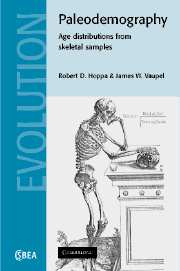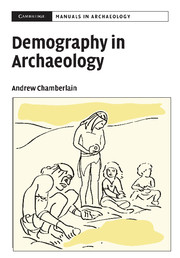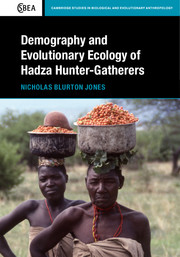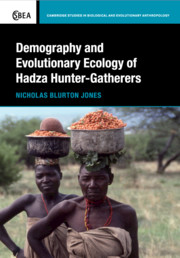Paleodemography
Paleodemography is the field of enquiry that attempts to identify demographic parameters from past populations (usually skeletal samples) derived from archaeological contexts, and then to make interpretations regarding the health and well-being of those populations. However, paleodemographic theory relies on several assumptions that cannot easily be validated by the researcher, and if incorrect, can lead to large errors or biases. In this book, physical anthropologists, mathematical demographers and statisticians tackle these methodological issues for reconstructing demographic structure for skeletal samples. Topics discussed include how skeletal morphology is linked to chronological age, assessment of age from the skeleton, demographic models of mortality and their interpretation, and biostatistical approaches to age structure estimation from archaeological samples. This work will be of immense importance to anyone interested in paleodemography, including biological and physical anthropologists, demographers, geographers, evolutionary biologists and statisticians.
- Cross-disciplinary volume with contributions from both biological anthropology and demography
- Provides guidelines for those undertaking demographic research from archaeological populations
- Analyses assumptions often made incorrectly for anthropological and demographic research
Reviews & endorsements
"Paleodemography has a checkered history and this book will mark a milepost." American Journal of Human Biology
"...paleodemographers, skeletal biologists, forensic anthropologists, bioarchaeologists, as well as archaeologists will find Paleodemography an important resource." SAS Bulletin
Product details
December 2004Adobe eBook Reader
9780511056932
0 pages
228 × 152 mm
0kg
32 b/w illus. 25 tables
This ISBN is for an eBook version which is distributed on our behalf by a third party.
Table of Contents
- 1. The Rostock Manifesto for paleodemography: the way from stage to age Robert D. Hoppa and James W. Vaupel
- 2. Paleodemography: looking back and thinking ahead Robert D. Hoppa
- 3. Reference samples: the first step in linking biology and age in the human skeleton Bethany M. Usher
- 4. Aging through the ages: historical perspectives on age-indicator methods Ariane Kemkes-Grottenthaler
- 5. Transition analysis: a new method for estimating age-indicator methods Jesper L. Boldsen, George R. Milner, Lyle W. Konigsberg and James W. Wood
- 6. Age estimation by tooth cementum annulation - perspectives of a new validation study Ursula Wittwer-Backofen and H. Buba
- 7. Mortality models for paleodemography James W. Wood, Darryl J. Holman, Kathleen A. O'Connor and Rebecca J. Ferrell
- 8. Linking age-at-death distributions and ancient population dynamics: a case study Richard R. Paine and Jesper L. Boldsen
- 9. A solution to the problem of obtaining a mortality schedule for paleodemographic data Bradley Love and Hans-Georg Müller
- 10. Estimating age-at-death distributions from skeletal samples: a multivariate latent trait approach Darryl J. Holman, James W. Wood and Kathleen A. O'Connor
- 11. Markov Chain Monte Carlo estimation of hazard model parameters in paleodemography Lyle W. Konigsberg and Nicholas P. Herrmann
- 12. A re-examination of the age-at-death distribution of Indian Knoll Nicholas P. Herrmann and Lyle W. Konigsberg.








